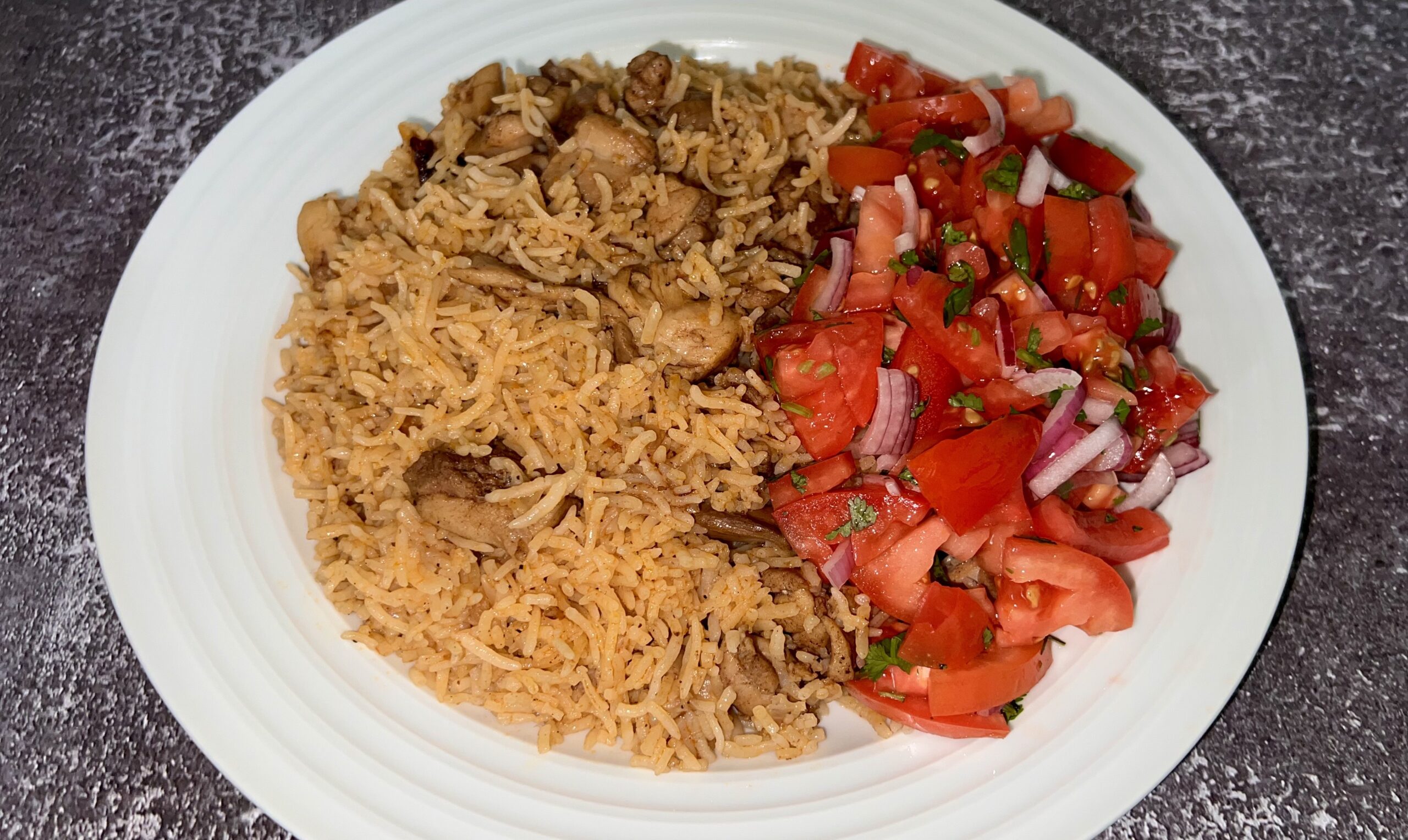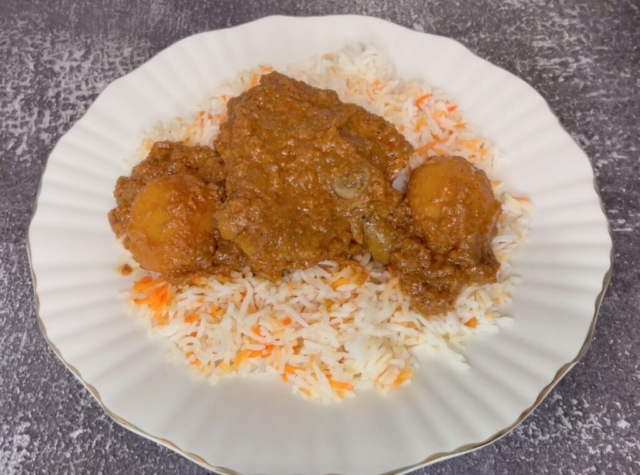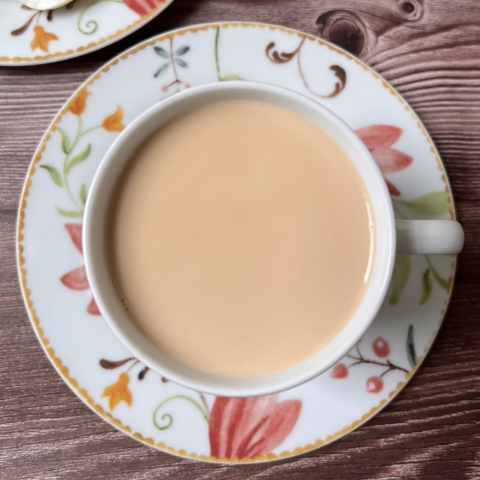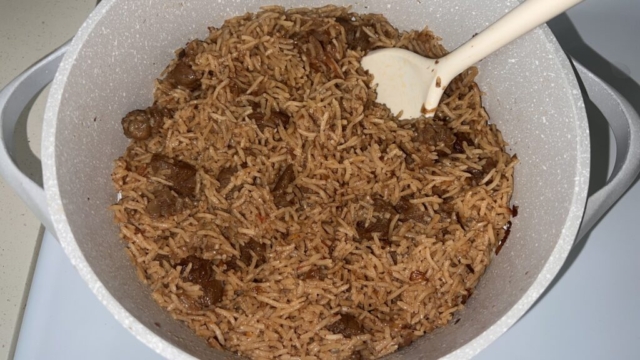This post may contain affiliate links, which means I may receive a commission from purchases made through the links.
A quick Google search on what Swahili, Indian, and Middle Eastern cuisine entails will yield largely similar results. From main dishes to snacks and street food, drinks, and desserts, as well as spices, seasonings, and cooking methods, there are numerous similarities between these cultures. While some of them may be coincidental, a lot of these similarities arise from the history shared between these regions of Asia and East Africa. In this article, I give an overview of popular East African or Swahili food whose origins can be traced back to India and the Middle East.
Why does Swahili food share similarities with Indian and Middle Eastern cuisine?
There are two answers to this question: (1) ancient trade connections, and (2) the effects of colonialism. The East African (Swahili) coast is heavily inhabited by people of Middle Eastern and Indian descent, both whole and partial. This is partly a result of the ancient, pre-colonial trade connections between East Africa and these parts of Asia. In addition, notable numbers of people of Indian descent have inhabited East African countries since the colonial period which saw their movement to the region. It should not be surprising, therefore, that Indian and Middle Eastern cuisine have such a notable influence on East African cuisine. While some of the dishes are more popular along the coast where the native Swahili population inhabits, some of them are staples throughout East Africa as I will be pointing out in the sections that follow.
I will cover the following categories of Swahili food: main dishes, drinks, snacks, and street food. I will also touch on food preparation and the spices and seasonings commonly used in East Africa with the goal of pointing out their similarity to the spices of India and the Middle East. Finally, I will briefly discuss some shared social norms regarding food.
Main Dishes – Swahili food
Chapati
Chapati is an unleavened flat bread that is made from all-purpose wheat flour, salt, water, and cooking oil or butter. History shows that chapati is a dish of Indian origin and that Indians brought it to East Africa both through trade and during the colonial period. Chapati is extremely popular across East Africa today. In fact, it is one of the staples that form the region’s food identity. East Africans have, without doubt, added their own touches to this dish thus making it quite different from the original Indian flatbread that came to the region. Compared to naan bread or roti which are part of Indian cuisine, East African chapati feels and tastes a little different. Regardless, you can still tell the shared baseline idea of the dish.
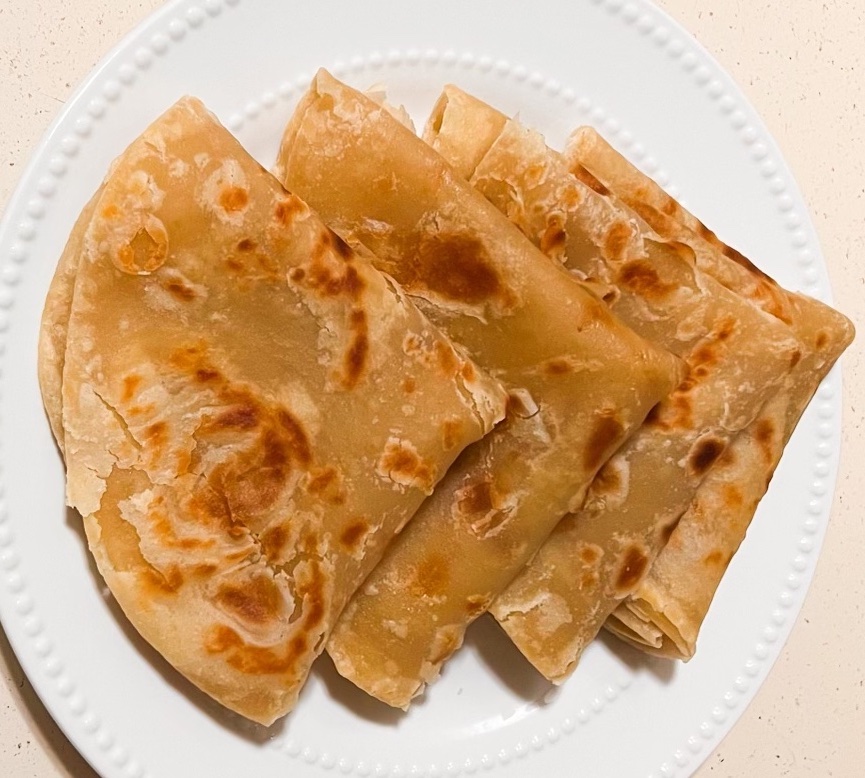
Chapati in East Africa is served at all times of day as I discuss in this article which also contains the recipe for soft and layered chapati. In Kenya for instance, you can enjoy chapati for breakfast, lunch, dinner, or as a snack for anytime, anywhere. It is available in restaurants of all calibers, as street food, and is also commonly made in households. East Africans often serve chapati with meats, legumes, or vegetables. Chapati is absolutely tasty and if you have never tried it, I highly recommend you give it a try.
Pilau
East African Pilau is a one-pot dish that is typically made with rice, meat, and a blend of aromatic spices. Pilau is a highly fragrant and flavorful meal, and it is popular in East Africa. However, the origins of this dish are quite far away from East Africa. Pilau is said to have originated from the Middle East. Like with the other dishes, East African pilau tends to be a little different from the Indian and Middle Eastern pilau recipes especially when it comes to the ingredients used. For instance, both Indian and Middle Eastern pilau recipes may have vegetarian options while in East Africa, pilau typically contains meat. If you make it without meat, it will likely not be termed pilau. Also, I have seen pilau recipes from both India and the Middle East where the meat and the rice are cooked separately and mixed at the time of serving. This method is uncommon in East Africa where rice is typically added to the meat broth and cooked in it.
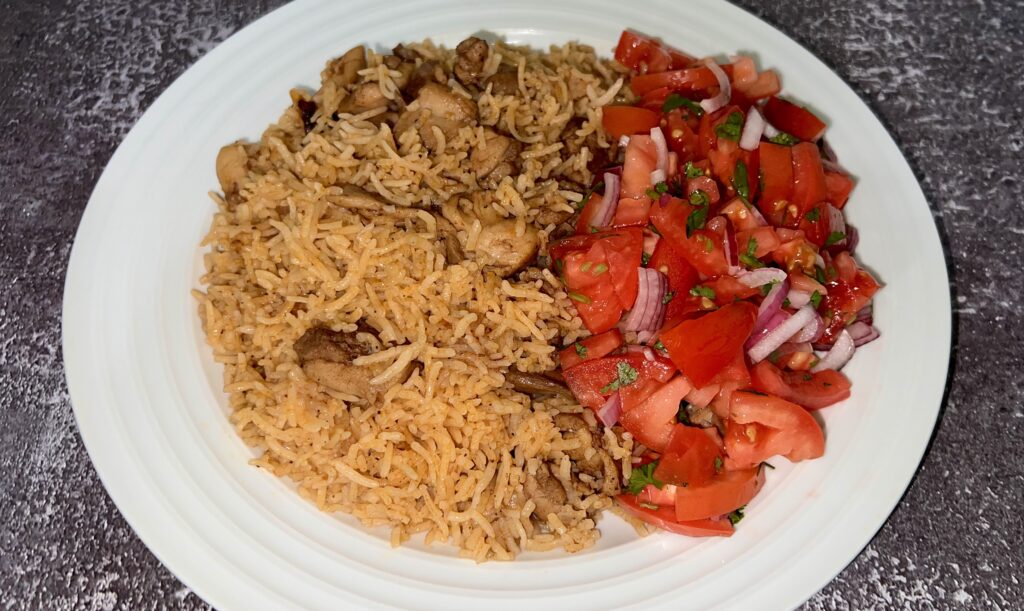
Regardless of the existing differences, pilau in all three regions is commonly made with long-grain rice, such as Basmati, and meats such as beef, chicken, lamb, or mutton. The spice combinations are also largely similar with some preferring ground spices while most prefer whole spices. Also, pilau is usually served both as a regular daily meal as well as a special occasion dish such as at weddings in all these regions. In Kenya, pilau is mostly served with Kachumbari – a colorful salad made with tomatoes, onions, cucumber, coriander leaves, and often, lime juice. Try making delicious pilau at home following my simple and straightforward recipes. Read the beef pilau recipe here or watch the beef pilau recipe on YouTube. Also, here is my chicken pilau recipe video.
Biryani (Biriani)
Biryani, or biriani as it is commonly referred to in Swahili, is another dish of Persian and Indian origins that is popular in East Africa. It is a colorful rice and meat dish that is cooked meticulously and with a blend of fragrant spices just like pilau. Swahili biriani is typically a two-part dish where the meat and the rice are cooked separately. The rice is brightly colored, and the meat is cooked in a very thick sauce in which fried onions and potatoes are added. Biriani is said to have originated from Persia (modern-day Iran) after which it spread across the Middle East and to India and Pakistan. As expected, different versions of biryani emerged as different cultures adopted the dish. When Swahili biryani is compared to Persian and Indian biryani, the dishes are largely similar but with slight differences, especially regarding the point at which meat and rice are combined. Some Indian and Persian recipes combine the two parts in the pot while cooking while Swahili recipes often involve cooking and serving the two parts separately or combining them at the time of serving. Here’s my written recipe and video recipe for chicken biryani.
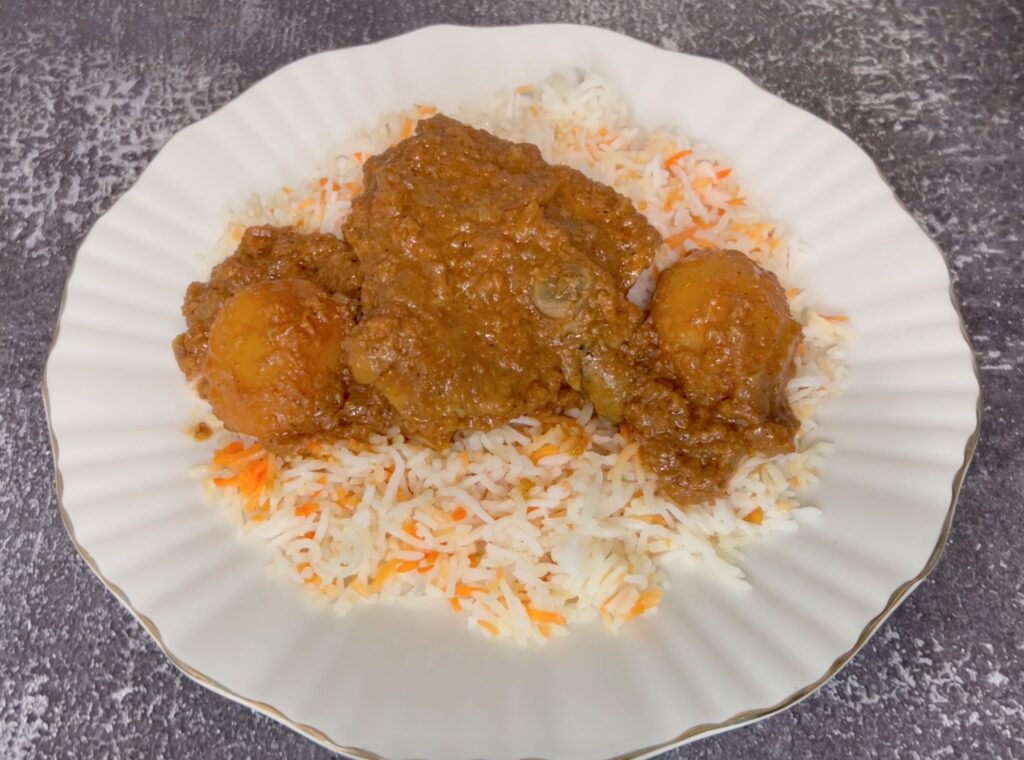
Drinks – Swahili food
Chai (Tea)
Chai is the Swahili word for tea. As you can tell, the Swahili people not only borrowed the beverage but also its name from the Indian people. Chai is a daily drink across East Africa. It is commonly made with milk and as a sweet tea as I explain in this recipe for mixed tea. Masala chai in which aromatic spices are added to the tea is also a popular option in both East Africa and India. Although chai originated in South Asia, it is fiercely embraced in East Africa, especially in Kenya where I come from. As I share in the above-linked article, the beverage is served for breakfast, after meals like lunch and dinner, and to guests when they visit. Chai is easy to make. Follow my precise recipe which also includes links to the best tea leaves for Kenyan mixed tea and all the guidance you need to brew this beverage at home.
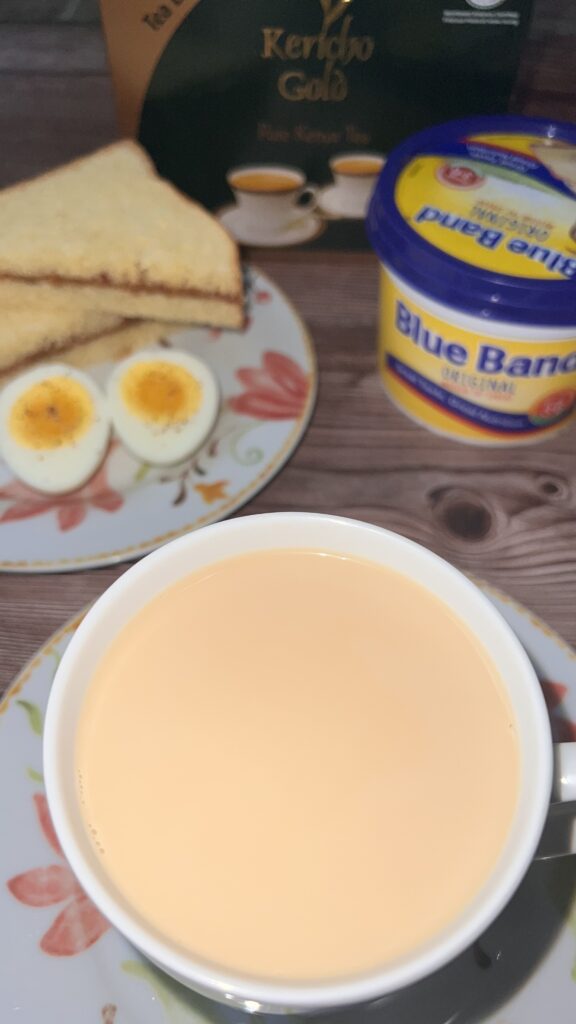
Coffee (Kahawa Chungu)
A type of coffee known as kahawa chungu – Swahili for ‘bitter coffee’ is another common drink in some regions of East Africa. This beverage has similarities with Arabic beverages like concentrated black tea and black coffee. The Swahili black coffee is made strong and concentrated as well. Although it may not be as popular as chai, there are committed drinkers of this coffee in East Africa as there are in the United States. Kahawa chungu is mostly a social drink that people, especially men, converge to share in the evenings while chit-chatting.
Snacks and street food
Samosa (Sambusa)
Samosa, or sambusa in Swahili, is a stuffed and fried pastry. Samosa may be filled with meat, legumes, or vegetables. It is just as popular in East Africa as it is in India where it originated from. In East Africa, samosa is commonly sold in restaurants and as street food. Although samosa can be eaten as a complete meal on its own, most people will order them as a side in addition to another dish. The most common samosa stuffing in East Africa is green grams (mung beans) and minced meat. Occasionally, you may also find a mixture of mashed potato and peas used as stuffing, a practice that is also common in Indian cuisine.
Bhajia
Bhajia is another dish of Indian origin that is popular, especially in the streets of Mombasa and other coastal cities of Kenya. It is made from flour from different legumes or grains, the common one being chickpeas. There are different types of bhajia depending on the flour that one uses. What defines bhajia though, according to my observation, is the addition of finely diced vegetables and herbs into the batter which is then fried until golden brown. Bhajia is usually served with a dipping sauce such as chutney or a lighter one which is made from tamarind. The tamarind sauce, called ukwaju in Swahili, is made savory, sour, and spicy. I learned recently that pakora which is so popular in Indian cuisine is exactly the same as some bhajia which are commonly made in Kenya. Quite amazing, right?
Kabob (kebab)
Kabob, a dish with Middle Eastern origins, is a popular street food in Kenya and throughout East Africa. The dish has many varieties to it ranging from grilled meat on skewers to ground meat which is shaped cylindrically, sometimes dipped in eggs, and fried or grilled. Kabobs are a true delicacy when made well. Mishikaki, the equivalent of Middle Eastern skewered kabobs, is a common street food on the Swahili coast and is often made with beef. Sometimes, vegetables are added too. Roast meat on skewers is also highly popular in Uganda where it is sold as street food and in some places, on the roadside to travelers who pass by.
The East African dishes that I have discussed above are by no means at all exhaustive of all the dishes in the region with Indian and Middle Eastern origins. The list is definitely longer but I could not cover everything in this single article. Also, there are East African foods like viazi karai, vitumbua, mkate wa sinia, and many more which, even if the original dish was foreign, have been ‘Swahilified’ to the point that they are considered more native than foreign.
Swahili food preparation – common spices and seasonings in East Africa
Dishes such as pilau and biriani are impossible to make without certain specific spice combinations. These spice combinations come in the form of masalas – pilau masala, biriani masala, etc., and the main ingredients in these masalas are usually cumin, cardamom, cinnamon, cloves, coriander, and black pepper. These spices, which are popularly used in India and the Middle East, are also widely used throughout East Africa. They are readily available for purchase in most markets both as whole and ground spices.
I mentioned earlier that pre-colonial trade connections existed between the Middle East and East Africa. One of the commodities that the Middle Eastern traders sought was cloves which were cultivated along the Swahili coast – a testament to the shared food culture between the two regions.
Regarding the methods of cooking, East African dishes bear similarities to Indian and Middle Eastern cuisine such as with the popularity of thick stews and curries. The choice of ingredients such as red onions, peppers, and tomatoes for stews, and the procedures followed in making those dishes, are practices that I have observed exist particularly in these cultures. Chinese cuisine or Hispanic cuisine, for instance, often follows different procedures and different ingredient combinations.
Shared social norms regarding food
Beyond shared recipes, East Africa, India, and the Middle East also share some social norms regarding food. The most common one, probably, is the use of hands to eat. This commonality, though, is most likely coincidental rather than borrowed in any culture. I learned with astonishment that this practice is shunned in some cultures such as in the West. Using one’s hands to eat is a common practice in many other regions of the world and from what I learned from my Muslim friends, Islam actually encourages the practice, and it is their belief that one receives more blessings from God when they use their hands to eat.
Another common norm across the three regions is food sharing where a meal can be served on a large plate or tray and several people would eat from that source. This practice is common in East Africa, not just with dishes of Asian origin but also with other dishes as well such as ugali.
Conclusion
In conclusion, Swahili food is diverse in terms of its origins. There is a lot that is shared between East Africa, India, and the Middle East with regard to food culture. These similarities largely stem from ancient trade connections and colonialism, but there may be a small degree of pure coincidence too. All in all, I think it is intriguing to know the origins of the dishes that we enjoy every day, and even more interesting to learn that the same dishes are enjoyed in other parts of the world that you may never even have been to. A good reason to plan to travel to those places, taste the authentic cuisine, draw comparisons with our own, and marvel at the workings of the world.
